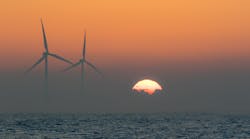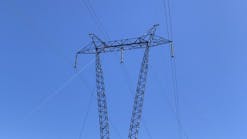Vineyard Wind: ROD Issued For 800-MW Offshore Wind Project
Vineyard Wind on May 11 said that it has received the U.S. Department of the Interior Bureau of Ocean Energy Management (BOEM) Record of Decision (ROD), which, as the company noted, is the final major step in the federal review process for the 800-MW offshore wind project located 15 miles off the coast of Martha’s Vineyard.
The project will be the first commercial scale offshore wind farm in the country, according to the company, which is a joint venture between AVANGRID subsidiary Avangrid Renewables and Copenhagen Infrastructure Partners (CIP).
The Vineyard Wind 1 project has been through a public review process since 2017, according to the statement.
As noted on the project website, Vineyard Wind has leased a 160,000-acre area south of Martha’s Vineyard.
The project design includes the GE Haliade-X turbine, with a capacity of 13 MW, Vineyard Wind said in its statement, adding that the larger turbine capacity has allowed the project to reduce the total number of turbines from 108 to 62, while still delivering a total capacity of 800 MW to Massachusetts ratepayers.
As noted on the website, power from the turbines will be collected by an offshore substation. Submarine cables will be installed along a route from the project site to a landing point on shore, buried up to six feet below the sea floor, the site noted, adding that the onshore cables will be buried along proposed routes in Barnstable. From the onshore cable landing site, the route will extend to the grid connection point inland, the site noted, adding that while the route will run underground primarily along public roads, it also includes segments within other previously disturbed corridors, such as an existing utility right of way (ROW).
Discussing the final agency decisions, the ROD said that by selecting the “Preferred Alternative,” Interior will allow 84 or fewer turbines to be installed in 100 of the 106 locations proposed by Vineyard Wind, and will prohibit the installation of wind turbine generators (WTGs) in six locations in the northern-most portion of the project area.
This decision, the ROD said, will also require that the turbine layout be arranged in an east-west orientation and that all the WTGs in the north-south and east-west direction will have a minimum spacing of 1 nautical mile (nmi) between them, consistent with the United States Coast Guard’s (USCG) recommendations in the final Massachusetts and Rhode Island Port Access Route Study (MARIPARS) report.
Vineyard Wind may choose where to place the 84 or fewer turbines on any of the remaining 100 locations available and must proceed within the range of the design parameters outlined in the Vineyard Wind Construction and Operations Plan (COP), the ROD said.
“BOEM weighed all concerns in making decisions regarding this project and has determined that all practicable means within its authority have been adopted to avoid or minimize environmental and socioeconomic harm associated with the selected alternatives and the approval of the COP,” the ROD said.
The company noted in its statement that the USCG has endorsed the turbine layout for transit, fishing, and navigational safety.
Vineyard Wind said that in response to comments and direct engagement with neighboring communities, environmental organizations and advocates, fisheries organizations, as well as governmental and tribal entities, the project has incorporated significant mitigation measures, including:
- Commitment to invest millions of dollars to develop and deploy innovative technologies and undertake scientific research to further safeguard marine mammals
- Agreements with the states of Massachusetts and Rhode Island to provide millions to compensate fishermen for potential loss of revenue and gear, as well as to enhance their ability to fish in and around the lease area
- Use of an Aircraft Detection Lighting System (ALDS) to ensure that nighttime lights will only operate a few hours a year when aircrafts are present
Among other things, Vineyard Wind said that the project will reach financial close in the second half of 2021, and begin delivering energy to Massachusetts in 2023.


